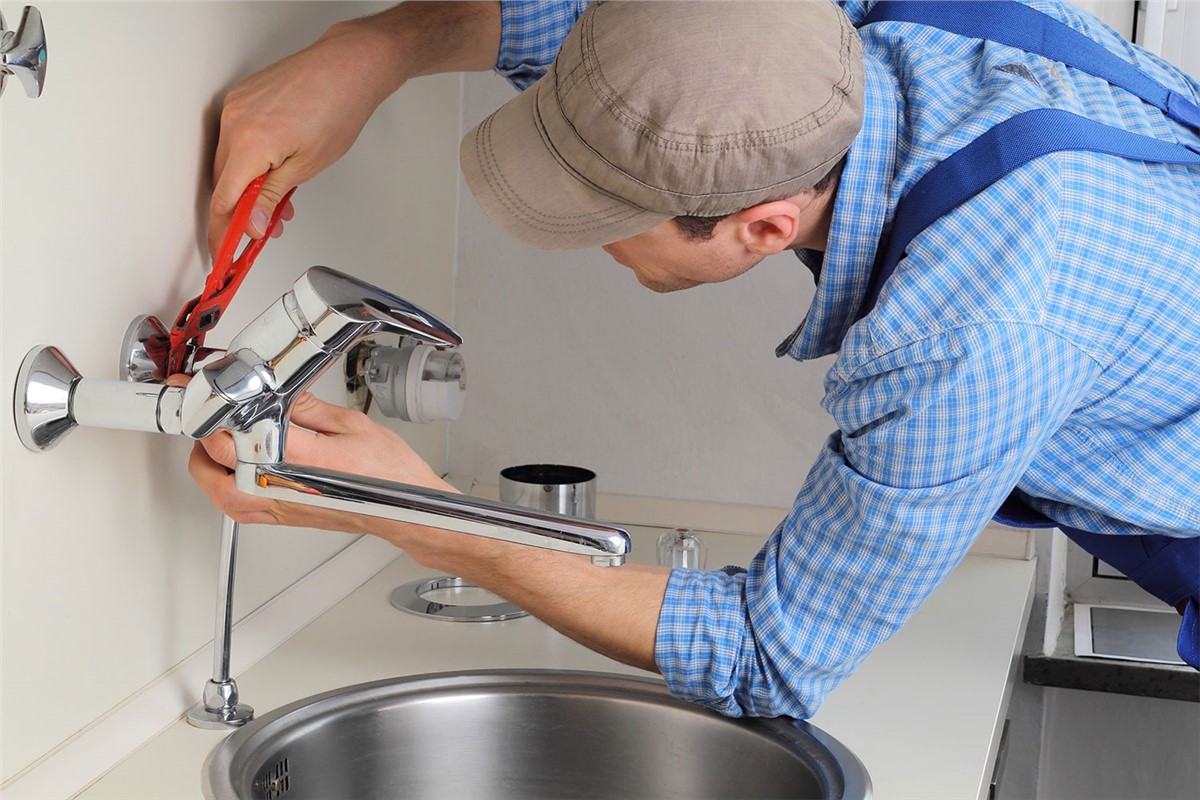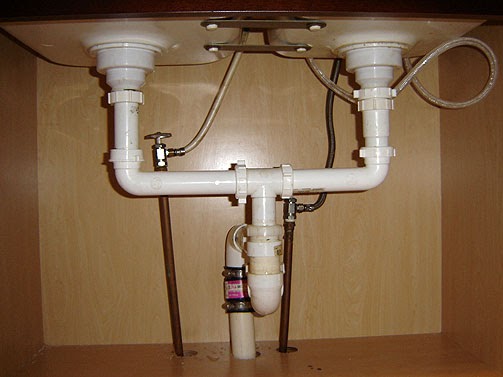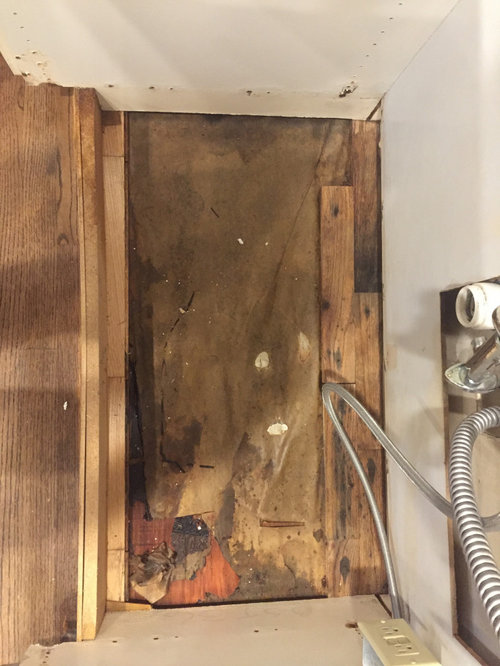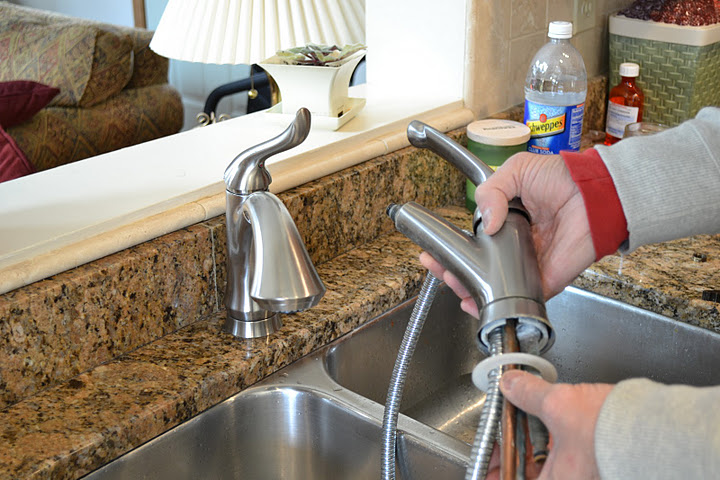How to Install a Kitchen Sink
Installing a new kitchen sink can be a daunting task, but with the right tools and knowledge, it can be a DIY project that saves you money and gives you a sense of accomplishment. In this guide, we will walk you through the step-by-step process of installing a kitchen sink in your home.
How to Install a Kitchen Sink Drain
The kitchen sink drain is an essential part of your sink, as it helps to remove dirty water and debris. If you are installing a new sink, you will also need to install a drain. Follow these steps to install a kitchen sink drain:
1. Measure the drain opening in your sink and purchase a matching drain assembly.
2. Apply plumber's putty around the drain opening and insert the drain assembly into the hole.
3. Secure the drain assembly in place with the provided hardware.
4. Connect the drain pipe to the bottom of the drain assembly using a P-trap.
5. Test the drain by running water and checking for leaks.
DIY Kitchen Sink Plumbing
If you are a handy homeowner, you may want to take on the challenge of installing your own kitchen sink plumbing. This can save you money and give you a better understanding of your home's plumbing system. Here are some tips for successful DIY kitchen sink plumbing:
1. Familiarize yourself with the plumbing tools and materials you will need for the job.
2. Follow all safety precautions, such as turning off the water supply before beginning any work.
3. Take your time and carefully follow instructions for each step of the plumbing installation process.
4. Test the plumbing system for leaks before using the sink.
How to Install a Kitchen Faucet
The kitchen faucet is another essential part of your sink that needs to be installed correctly for proper functioning. Follow these steps to install a kitchen faucet:
1. Turn off the water supply to the sink.
2. Remove the old faucet and clean the area where the new faucet will be installed.
3. Install the new faucet according to the manufacturer's instructions, making sure all connections are secure.
4. Turn the water supply back on and test the faucet for leaks.
DIY Kitchen Sink Installation
If you are installing a new sink in your kitchen, it is important to follow the correct steps to ensure a successful installation. Here are some tips for DIY kitchen sink installation:
1. Measure the space where the sink will be installed to ensure a proper fit.
2. Purchase a sink that matches the measurements and style of your kitchen.
3. Follow the manufacturer's instructions for installation, making sure all connections are secure.
4. Test the sink for leaks before using it.
How to Install a Garbage Disposal
A garbage disposal is a convenient addition to your kitchen sink that helps to break down food waste and prevent clogs. Here's how to install a garbage disposal:
1. Turn off the power supply to the area where the disposal will be installed.
2. Remove the old disposal (if applicable) and clean the area.
3. Install the new disposal according to the manufacturer's instructions, making sure all connections are secure.
4. Turn the power back on and test the disposal for proper functioning.
DIY Kitchen Sink Plumbing Tips
Here are some additional tips to keep in mind when tackling a DIY kitchen sink plumbing project:
1. Always turn off the water supply before beginning any work.
2. Have all necessary tools and materials on hand before starting.
3. If you encounter a problem or are unsure of what to do, consult a professional plumber.
4. Test for leaks and proper functioning after each step of the installation process.
How to Replace a Kitchen Sink
If your kitchen sink is old, damaged, or you simply want to update the look of your kitchen, replacing it may be necessary. Here's how to replace a kitchen sink:
1. Turn off the water supply to the sink.
2. Disconnect the plumbing connections and remove the old sink.
3. Install the new sink, making sure it fits properly and all connections are secure.
4. Reconnect the plumbing and turn the water supply back on.
5. Test the sink for leaks and proper functioning.
DIY Kitchen Sink Plumbing Troubleshooting
Despite your best efforts, you may encounter problems with your DIY kitchen sink plumbing. Here are some common issues and how to troubleshoot them:
1. Leaks: Check all connections for tightness and make sure all parts are properly installed.
2. Low water pressure: This can be caused by a clogged aerator or a plumbing issue. Clean or replace the aerator and if the problem persists, consult a professional plumber.
3. Noisy pipes: This may be due to loose connections or water hammer. Tighten connections and install water hammer arrestors if needed.
4. Clogs: Use a plunger or plumbing snake to clear any clogs in the sink or drain pipes.
How to Install a Kitchen Sink Strainer
The kitchen sink strainer helps to prevent food and debris from clogging your drain. Here's how to install a kitchen sink strainer:
1. Remove any old strainer or stopper from the drain.
2. Clean the area around the drain and remove any debris.
3. Apply plumber's putty around the underside of the strainer and insert it into the drain hole.
4. Secure the strainer in place with the provided hardware.
5. Test the strainer for proper functioning by running water and checking for leaks.
In conclusion, installing a kitchen sink can be a challenging but rewarding DIY project. By following these steps and tips, you can successfully install a new sink and save money on professional plumbing services. Remember to always take proper safety precautions and consult a professional if you encounter any issues or are unsure of what to do.
Why DIY Kitchen Sink Plumbing Installation Can Save You Money and Enhance Your Home Design
Professional plumbing services can be costly
 When it comes to home renovations, the costs can quickly add up. This is especially true when it comes to hiring professional plumbers to install or repair kitchen sink plumbing. Not only do you have to pay for their services, but you also have to factor in the cost of materials and any unexpected expenses that may arise during the project. By opting for a DIY approach to your kitchen sink plumbing installation, you can save a significant amount of money. This extra cash can then be put towards other home design projects or upgrades.
When it comes to home renovations, the costs can quickly add up. This is especially true when it comes to hiring professional plumbers to install or repair kitchen sink plumbing. Not only do you have to pay for their services, but you also have to factor in the cost of materials and any unexpected expenses that may arise during the project. By opting for a DIY approach to your kitchen sink plumbing installation, you can save a significant amount of money. This extra cash can then be put towards other home design projects or upgrades.
DIY allows for more personalization
 When you hire a professional plumber, they will likely follow a standard procedure for installing your kitchen sink plumbing. While this may be efficient, it may not leave much room for personalization or customization. By taking on the project yourself, you have the opportunity to choose the specific materials and design elements that best suit your taste and home design. This can result in a more unique and personalized kitchen sink that perfectly complements the rest of your home.
When you hire a professional plumber, they will likely follow a standard procedure for installing your kitchen sink plumbing. While this may be efficient, it may not leave much room for personalization or customization. By taking on the project yourself, you have the opportunity to choose the specific materials and design elements that best suit your taste and home design. This can result in a more unique and personalized kitchen sink that perfectly complements the rest of your home.
Learning a new skill can be rewarding
 Taking on a DIY kitchen sink plumbing project may seem daunting, but it can also be a great opportunity to learn a new skill. By following online tutorials or consulting with experts, you can gain valuable knowledge and experience in plumbing. This can not only save you money in the long run, but it can also give you a sense of accomplishment and pride in your home. Plus, having knowledge of plumbing can come in handy for future home projects or repairs.
Taking on a DIY kitchen sink plumbing project may seem daunting, but it can also be a great opportunity to learn a new skill. By following online tutorials or consulting with experts, you can gain valuable knowledge and experience in plumbing. This can not only save you money in the long run, but it can also give you a sense of accomplishment and pride in your home. Plus, having knowledge of plumbing can come in handy for future home projects or repairs.
Enhance your home design with a DIY kitchen sink installation
 Not only can a DIY kitchen sink plumbing installation save you money and allow for more personalization, but it can also enhance the overall design of your home. By carefully selecting materials and design elements, you can create a stunning and functional kitchen sink that adds to the aesthetic of your home. You can also take this opportunity to update other design elements in your kitchen, such as the faucet or backsplash, to tie the whole look together.
In conclusion, opting for a DIY approach to your kitchen sink plumbing installation can save you money, allow for more personalization, and enhance the design of your home. With careful planning, research, and the right tools, you can successfully tackle this project and reap the rewards of a job well done.
Not only can a DIY kitchen sink plumbing installation save you money and allow for more personalization, but it can also enhance the overall design of your home. By carefully selecting materials and design elements, you can create a stunning and functional kitchen sink that adds to the aesthetic of your home. You can also take this opportunity to update other design elements in your kitchen, such as the faucet or backsplash, to tie the whole look together.
In conclusion, opting for a DIY approach to your kitchen sink plumbing installation can save you money, allow for more personalization, and enhance the design of your home. With careful planning, research, and the right tools, you can successfully tackle this project and reap the rewards of a job well done.














/how-to-install-a-sink-drain-2718789-hero-b5b99f72b5a24bb2ae8364e60539cece.jpg)


:max_bytes(150000):strip_icc()/how-to-install-a-sink-drain-2718789-hero-24e898006ed94c9593a2a268b57989a3.jpg)


:max_bytes(150000):strip_icc()/how-to-install-a-sink-drain-2718789-04-5715d67f5b7d41429d42bf705bb70e2c.jpg)



























:no_upscale()/cdn.vox-cdn.com/uploads/chorus_asset/file/19495086/drain_0.jpg)























































